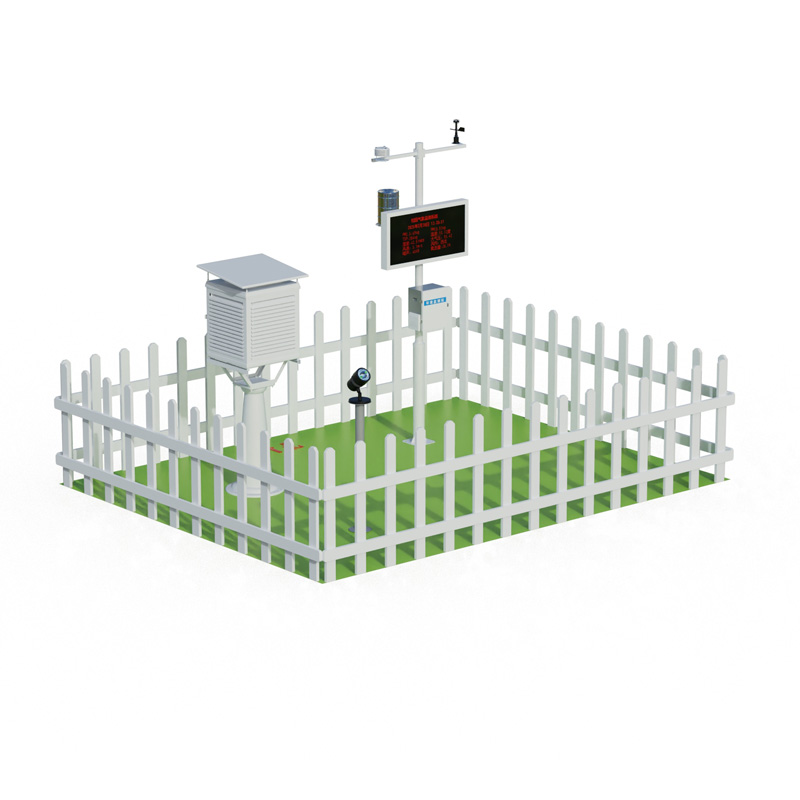Tianqiong Sensor IOT Technology Co., Ltd
Sales Manager:Ms. Emily Wang
Cel,Whatsapp,Wechat:+86 15898932201
Email:info@fengtutec.com
Add:No. 155 Optoelectronic Industry Accelerator, Gaoxin District, Weifang, Shandong, China

Sales Manager:Ms. Emily Wang
Cel,Whatsapp,Wechat:+86 15898932201
Email:info@fengtutec.com
Add:No. 155 Optoelectronic Industry Accelerator, Gaoxin District, Weifang, Shandong, China

Model:FT-XQ3
Brand:tianqiong
1.Product introduction of Popular science weather station
Popular science weather station is a professional meteorological observation system used for scientific research and environmental monitoring in primary and secondary schools.XQ3 Popular science weather station is a highly integrated, low-power, fast installation and easy to use in teaching.
2.Product features of Popular science weather station
1.Transmission method: GPRS, optionally equipped with wired transmission;
2.Power supply method: mains;
3.Display method: 1 meter * 0.5 meter LED screen;
4.Hardware composition: sensor, pole bracket, equipment box, LED screen, collector, cloud platform, fiberglass blind box (including dry and wet bulb thermometer), sun meter, fence
3.Popular science weather station technical parameters
1.Sensor parameters
| name | Measurement range | Resolution | Accuracy |
| Ambient temperature | -40~+80℃ | 0.01℃ | ±0.3℃ (25℃) |
| Relative humidity | 0~100%RH | 0.01%RH | ±3%RH (20%~80%) |
| Light intensity | 0-157286LUX | 1Lux | <±3% |
| Atmospheric pressure | 300-1100hpa | 0.1hPa | ±0.25% |
| Dew point temperature | 0~+70℃ | 0.1℃ | ±1℃ |
| Soil temperature | -30~+70℃ | 0.01℃ | ±0.3 (-10~70℃) |
| Soil moisture | 0~100% | 0.1% | ±3% |
| Soil Salt | 0~20000us/cm | 1us/cm | ±3 (0~10000us/cm) ±5% (full range) |
| Soil PH | 0-14PH | 0.01 | ±0.1PH |
| wind direction | 0-360 degrees | 0.1 degree | ±1 degree |
| Wind speed | 0-60m/s | 0.01m/s | ±0.2m/s |
| Average wind speed☆ | 0-60m/s | 0.01m/s | ±0.2m/s |
| rainfall | ≦4mm/min | 0.2mm | ≤±2% |
| Ultraviolet radiation | 0~500W/㎡ | 0.01W/㎡ | ≤±3% |
| Sunshine hours | 0~6500h | 0.1h | <0.2h |
| Total photoelectric radiation | 0-2000W/m2 | 1W/m2 | <±3% |
| Photosynthetic effective radiation | 0-2000W/m2 | 1W/m2 | ≤±5% |
| PM2.5 | 0-1000ug/m³ | 1ug/m³ | ±10% (<500 micrograms) |
| PM10 | 0-1000ug/m³ | 1ug/m³ | ±10% (<500 micrograms) |
| Carbon monoxide | 0-1000ppm | 1PPM | ±2PPM |
| Sulfur dioxide | 0-20PPM | 0.1PPM | ±1PPM |
| Nitrogen dioxide | 0-20PPM | 0.1PPM | ±1PPM |
| ozone | 0-20PPM | 0.1PPM | ±1PPM |
| Negative oxygen ions | 0~100,000 units/cm3 | 1/cm3 | Reading ±10%; ion mobility ≤±20% |
| Oxygen content | 0~25%Vol | 0.1% | ±3%FS |
| carbon dioxide | 400-5000ppm | 1PPM | ±(50ppm+5% reading value) |
| Evaporation | 0-190mm | 0.01mm | ±1% |
2.Sunshine: a bracket containing a height of 60cm
3.Fence: Material: PVC; 80cm height, specifications: 4 meters x 5 meters
4.Data storage: no less than 500,000 pieces
5.Power consumption: 202W
6.The manufacturer has ISO quality management system, environmental management system and occupational health management system certification
7.The manufacturer has a computer software registration certificate
8.The manufacturer is a 3A-level credit enterprise
4.Introduction to Popular science weather station cloud platform
1.CS architecture software platform, supports direct observation of mobile phones and PC browsers without additional software installation.
2.Support multiple accounts and multiple devices to log in
3.Support real-time data display and historical data display dashboard
4.Cloud server and cloud data storage are stable and reliable, easy to scale, and load balancing.
5.Support SMS alarm and threshold settings
6.Support map display and viewing device information.
7.Support data curve analysis
8.Support data export table form
9.Supports data forwarding, HJ-212 protocol, TCP forwarding, http protocol, etc.
10.Support data post-processing function
11.Support external running of javascript scripts
Negative oxygen ions are negatively charged particles formed when oxygen molecules combine with free electrons through natural processes. Known as the "air freshening factor", they not only purify the air but also regulate human health. They can adsorb dust and odor molecules, and improve...
In tourist attractions, air quality is one of the important factors attracting visitors. As a key indicator for measuring air quality, negative oxygen ion concentration has received increasing attention from more and more scenic spots. Known as the "vitamin of the air," negative oxygen ion...
A School Weather Station is a comprehensive device established on campus that can automatically, continuously, and in real-time observe and record various meteorological elements. Composed of sensors, data loggers, power supply systems, communication modules, and data display platforms (such as camp...
Vehicle Weather Station is a professional mobile monitoring device based on the ultrasonic time-of-flight principle. It accurately calculates wind speed and direction by measuring the time difference of ultrasonic wave propagation, and integrates temperature, humidity, and pressure sensors to achieve real-time collection of multi-element meteorological data on a vehicle platform....